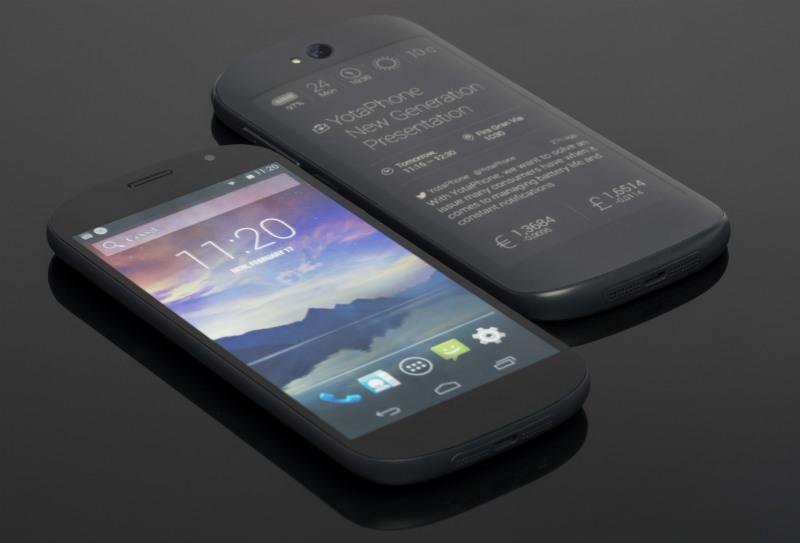
When catching up on the latest mobile trends, you’ll often hear about how the latest iPhone is doing, how powerful the latest Galaxy Note is, whether BlackBerry is having a good or a bad day, or if Microsoft has been able to improve the Windows Phone app market yet. However, beyond your typical, popular topics, you’re sometimes able to stumble across something a little more unique. This happened to me last year when I first stumbled across YotaPhone.
The YotaPhone doesn’t look like much more than your standard Android slab from the front. There’s nothing special to see right off the back. When you turn the phone over onto its “back”, however, you’ll find that instead of your typical hard back cover, you are instead greeted with a secondary eInk display.
It’s a bizarre concept, but I still think it’s one that could work. Maybe not mainstream, though; I asked readers earlier this year whether more phones should follow the design of the YotaPhone, and as a conclusion it seemed that most responses geared towards the YotaPhone being a niche smartphone - and I agree. But as niche as the YotaPhone might be, I still think that it’s a sellable concept. The secondary eInk display could initially be seen as a hassle, but it could also be considered an admirable feature for many.
So what kind of benefits would a secondary eInk display give users? For starters, there is the battery life preservation. YotaPhone, who will allegedly announce the 2nd generation of the device on December 3rd, gives users the ability to turn off the LCD display on the front and allowing users to only rely on the eInk display. This saves a tremendous amount of battery life if all users want to do is check notifications, e-mails, or read eBooks or publications. For a lot of people, the bulk of their day is spent checking notifications and reading e-mails anyway. Why bother wasting unnecessary battery life if they don’t have to?
There’s also the benefit that, for a lot of people, reading an eInk display is much more comfortable than reading a bright LCD. Although there are applications like Amazon’s Kindle or Barnes & Noble Nook for smartphones, reading on bright LCD displays for long periods of time isn’t as ideal as reading on something like an eInk display. For people who do a lot of reading on their phones, an eInk display could serve as a really nice benefit.
Even aside from YotaPhone’s interesting secondary eInk display, the 2nd generation device doesn’t seem to be too shabby as a standard smartphone either. With a rumored 5-inch 1920x1080 AMOLED display, quad-core Snapdragon 800 processor, 2GB of RAM, 32GB of internal storage and an 8-megapixel rear-facing camera (2-megapixel front-facing camera) this phone should be a pleasure to use no matter which display you’re using. It might not have the most top-notch specs, but certainly not the worst. I feel like its design and features make it a particularly interesting smartphone.
However, one definite drawback is that you would probably always have both sides exposed, so if you’re a case person you’re probably going to be more paranoid than pleased.
I have my doubts on whether the YotaPhone will ever make its way stateside, but I would like to see one, or something similar, hit shelves over here at one point or another. This is definitely a unique device that I would consider picking up for myself, as somebody who uses a smartphone and an e-Reader fairly regularly. Either way, I know I’ll be keeping my eye out for more information after the event in London on December 3rd.
Images via The Next Web, Tech Crunch